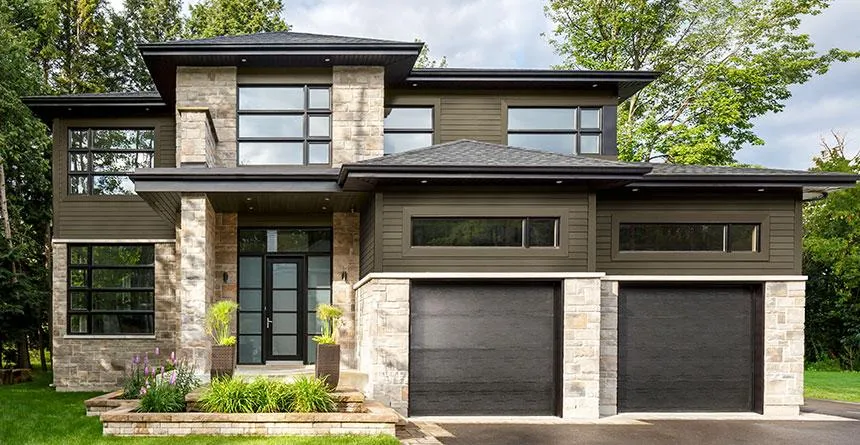Wesley Chapel Siding Blog
Welcome to Our Siding Contracting Services Blog

From Vinyl to Fiber Cement: Decoding the World of Siding Materials
They say that the choice of siding material can make or break a home. And when it comes to the world of siding materials, it can feel like deciphering a secret code. From vinyl to fiber cement, the options seem endless. But fear not, for we are here to guide you through this labyrinth of choices and help you make an informed decision for your home. So, buckle up and get ready to explore the fascinating world of siding materials.
Vinyl Siding: Pros and Cons
When considering vinyl siding for your home, it is important to weigh the pros and cons. Vinyl siding offers several benefits, including cost effectiveness and low maintenance requirements.
One of the main advantages of vinyl siding is its cost effectiveness. Vinyl siding is generally less expensive than other siding materials, such as wood or fiber cement. This makes it a popular choice for homeowners on a budget. Additionally, vinyl siding is available in a wide range of colors and styles, allowing homeowners to achieve the desired aesthetic for their home without breaking the bank.
Another benefit of vinyl siding is its low maintenance requirements. Unlike wood siding, which may require regular painting or staining, vinyl siding is virtually maintenance-free. It does not need to be painted and can be easily cleaned with a hose or pressure washer. This not only saves homeowners time and effort but also reduces the long-term costs associated with maintenance and repairs.
While vinyl siding offers many advantages, it is important to consider the potential drawbacks as well. For instance, vinyl siding may not be as durable as other materials and can be prone to fading or cracking over time. Additionally, it may not provide the same level of insulation as thicker materials like fiber cement.
Wood Siding: A Classic Choice
Now let's explore wood siding, a timeless choice that provides a classic aesthetic for homes. Wood siding is known for its natural beauty and warm appeal. One of the advantages of choosing wood siding is its cost. While it may be more expensive upfront compared to other siding materials, wood siding can last for decades with proper maintenance, making it a cost-effective choice in the long run.
When it comes to wood siding maintenance, regular upkeep is necessary to ensure its longevity. This includes inspecting for any signs of damage, such as rot or insect infestation, and promptly addressing these issues. Regular cleaning and sealing are also important to protect the wood from moisture and UV damage. While these maintenance tasks require some effort, they are relatively simple and can be easily done by homeowners.
It's worth noting that the cost of wood siding can vary depending on the type of wood chosen. Cedar and redwood are popular options due to their durability and resistance to decay. These hardwoods tend to be more expensive than softwoods like pine. Additionally, the cost of wood siding installation should be factored into the overall budget.
Fiber Cement Siding: Durable and Versatile
Fiber cement siding offers durability and versatility, making it a popular choice for homeowners. When it comes to the installation process, fiber cement siding requires a bit more expertise and time compared to other siding materials. However, the end result is worth the effort. The process involves cutting the fiber cement boards to the desired size, nailing them to the exterior walls, and sealing the joints to prevent moisture penetration. It is important to note that proper safety precautions should be taken during the installation, as fiber cement contains silica, which can be harmful if inhaled.
One of the key advantages of fiber cement siding is its superior durability. Unlike vinyl siding, which can crack or warp over time, fiber cement siding is resistant to damage from extreme weather conditions, including strong winds, hail, and temperature fluctuations. It is also highly resistant to rot, pests, and fire, making it a long-lasting and low-maintenance option for homeowners.
In terms of versatility, fiber cement siding comes in a variety of styles, textures, and colors, allowing homeowners to achieve their desired aesthetic. Whether you prefer the look of wood, stucco, or even brick, fiber cement siding can be customized to match your vision. Additionally, it can be painted, allowing for further customization and the ability to change the color in the future.
When comparing fiber cement siding to other siding materials, such as vinyl or wood, it is clear that fiber cement offers a unique combination of durability and versatility. While the installation process may require more effort, the long-term benefits and aesthetic possibilities make it a worthwhile investment for homeowners.
Metal Siding: Modern and Industrial
After exploring the durability and versatility of fiber cement siding, let's now turn our attention to the modern and industrial appeal of metal siding. Metal siding is gaining popularity in the construction industry due to its sleek and contemporary look. It adds a touch of sophistication and a unique aesthetic to any building.
One of the key benefits of metal siding is its easy installation process. Unlike other siding materials, metal siding can be quickly and efficiently installed, saving both time and money. This makes it an attractive option for contractors and homeowners alike.
Another advantage of metal siding is its durability. Metal is known for its strength and resistance to harsh weather conditions. It can withstand heavy rain, strong winds, and even hail, ensuring that your home or building remains protected for years to come. Additionally, metal siding is fire-resistant, making it a safe choice for any property.
In addition to its practical benefits, metal siding also offers a variety of design options. It comes in a wide range of colors and finishes, allowing you to customize the look of your home or building. Whether you prefer a sleek and modern appearance or a more rustic and industrial vibe, metal siding can help you achieve the desired aesthetic.
Brick Siding: Timeless Elegance
Brick siding exudes a timeless elegance that adds charm and character to any home or building. Its enduring beauty has made it a popular choice for centuries. The installation process for brick siding involves several steps that ensure a secure and durable finish.
First, the area where the brick siding will be installed must be properly prepared. This includes removing any existing siding or debris and ensuring a clean and level surface. Next, a moisture barrier is applied to protect against water damage. This is followed by the installation of a metal lath, which provides a secure base for the bricks.
Once the preparation is complete, the bricks are carefully laid in a pattern of choice. Mortar is used to bond the bricks together, creating a solid and long-lasting structure. After the bricks are in place, any excess mortar is removed and the siding is left to dry.
Brick siding not only offers timeless beauty but also provides excellent insulation and durability. It is resistant to fire, rot, and pests, making it a low-maintenance option. With proper care, brick siding can last for decades, adding value and elegance to any home or building.
Conclusion
In conclusion, when it comes to choosing the right siding material for your home, it's important to consider the pros and cons of each option. Vinyl siding offers affordability and low maintenance, while wood siding provides a classic and timeless look. Fiber cement siding is known for its durability and versatility, while metal siding adds a modern and industrial touch. Lastly, brick siding exudes timeless elegance. Ultimately, the choice depends on your personal preferences, budget, and the overall aesthetic you want to achieve for your home.
© Copyright 2025 Wesley Chapel Siding. All Rights Reserved.
Terms & Conditions | Privacy Policy
Zip codes we serve: 33543,33545,33544,33647,33559,33541,34639,33576,33592,33539,33574,33542,33549,33524,34637,33540,33613,33548,33525,33637,33620,33617,3355833543,33545,33544,33647,33559,33541,34639,33576,33592,33539,33574,33542,33549,33524,34637,33540,33613,33548,33525,33637,33620,33617,33558

